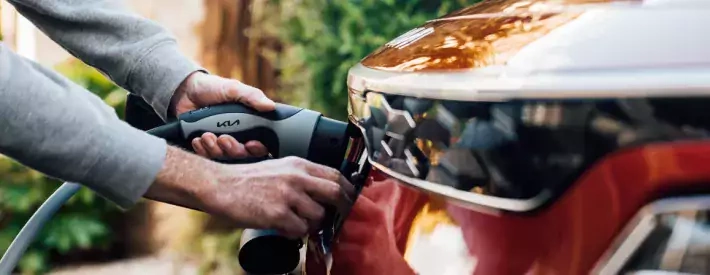How difficult is it to repair an EV?

The government wants more EVs on the road, manufacturers are increasing the number of EVs in their product portfolios and slowly the infrastructure is being built to support them. But there are still elements to the shift to electrification that remain an unknown.
One is what happens in the collision repair and salvage processes and their impact on insurance claims and their associated costs.
It’s why Thatcham Research is leading a project to delve deeper into the topic and find out. The five-month research project, funded by Innovate UK brings together insurer LV= and SYNETIQ, a specialist in vehicle salvage, dismantling and recycling.
Adrian Watson, head of engineering, Thatcham Research said: “The automotive industry, and OEMs specifically, have been extremely agile in adapting their businesses to meet the net zero challenge laid down by government. This has seen drivers plugging into EVs in ever increasing numbers, making now a critical moment for those throughout the value chain to put everything in place to support this rapid transition.
“In many circumstances, EV accident repair is no different from internal combustion engine (ICE) vehicles. But under the hood lie everyday essentials, such as safe, cost-effective, timely post-accident repair, and the surrounding claims process so critical to putting any new vehicle on the road. And nowhere is the difference between EV and ICE more clearly underlined than in the insurance claim chain.”
At the centre of the issue is arguably an EV’s battery pack. Conscious that batteries are expensive, vulnerable items, OEMs rigorously protect them within crash structures, and batteries will rarely be affected by low-speed impacts. However, challenges arise when the battery is involved, either directly or indirectly as a result of a collision, or indirectly when the high-voltage system becomes associated with the repair.
“It’s vital that the industry comes together to ensure customer expectations of owning, insuring, and repairing an EV can be met—and that the experience can be better than they’re used to with an ICE,” said Watson.
Finding the best way to repair EVs Thatcham Research is working in close partnership with LV= General Insurance, drawing on real-world claims data to inform project modelling.
Chris Payne, head of networks and engineering at LV=, said: “As a motor insurer, we’re focusing on two trends at the moment: developing green methods of repair and supporting the wider adoption of electric cars. That’s why this project is so exciting and crucial. It is about finding together as an industry what is the best way to repair EVs and their batteries, rather than writing them off. This will not only have a positive impact on claims costs, but will also feed a healthy second-hand EV market.”
Vehicle salvage, dismantling and recycling specialist SYNETIQ, will also play a key role in the project. As a business focused on recycling and re-using as much of a crash-damaged vehicle as is possible, it will bring essential insight into the readiness of the market for financially and environmentally sustainable EVs post-accident, with a particular focus on their batteries.
Tom Rumboll, UK Managing Director for IAA and CEO of SYNETIQ said: “The purpose of our business is to maximise the financial and environmental return on vehicles, and we look forward to seeing how we can achieve this with EV batteries. We’re excited for this opportunity to lead and develop a way forward and we look forward to sharing the results with the rest of the industry.”
In the first phase of what is likely to be a significant cross-industry effort, the project will focus on identifying where the claims workflow is different for EVs, revealing potential pain points. Thatcham Research will also quantify the resulting challenges by projecting how the uptake of EVs will affect the transition to a fully electric car parc, to inform where more detailed work may be required in the future.




